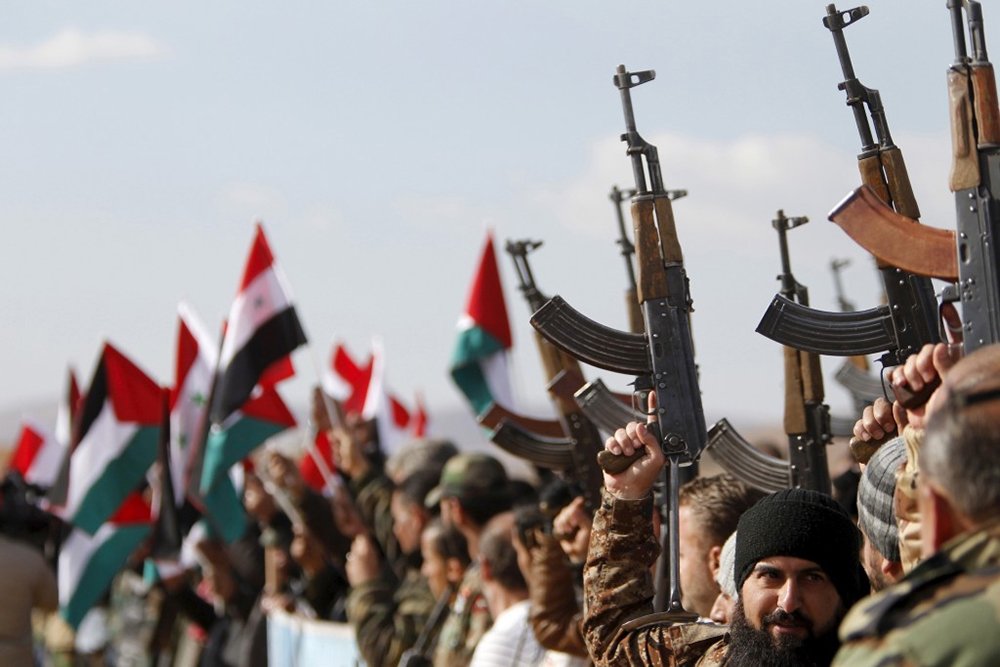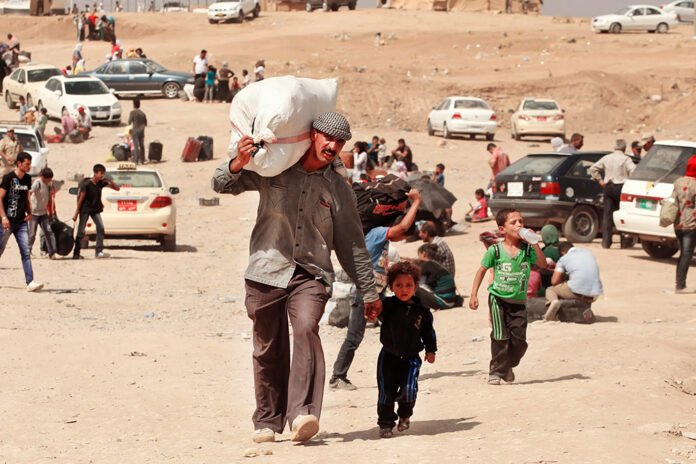For more than a decade, the Syrian civil war ravaged the country, resulting in the deaths of over 600,000 people and the displacement of more than 12 million, creating one of the largest humanitarian crises in modern history. The conflict settled into a largely frozen dynamic for years, with the Bashar al-Assad regime holding on to power with the backing of Russia and Iran, while rebel groups maintained control of fragmented territories. This deadlock was shattered in late 2024 by a ten-day offensive that culminated in the fall of the capital, Damascus, and the collapse of the Assad regime. This dramatic shift has not brought a simple peace, but a complex new moment in Syria’s history. The country now stands at a critical juncture, facing the monumental tasks of rebuilding a shattered state, unifying a deeply fractured society, and navigating a new geopolitical order.
From the Fall of a Dynasty to Precarious Governance and Renewed Instability
The end of the Assad family’s fifty-year rule was swift and unexpected. On December 8, 2024, the Bashar al-Assad regime fell after a rapid rebel offensive led by the Islamist militant group Hayat Tahrir al-Sham (HTS) and the Turkish-backed Syrian National Army (SNA). As Damascus fell, deposed President Assad fled to Moscow, where he was granted asylum.
The fall of the regime was met with a mix of celebration and cautious optimism, even among some of the former loyalists, who had grown disillusioned with Assad’s inability to address the country’s worsening crises. On the other side, West rejoiced in the fall of Assad with a flurry of delegations from the USA, France, Germany, other European countries, and even Russia, making a beeline for Damascus. Abu Julani, in his new role as the President, made Saudi Arabia his first port of call, followed by Turkey and Jordan. Soon, the United Kingdom took HTS off its terrorist list, and President Trump met Abu Jolani in Riyadh alongside Saudi Crown Prince Mohammed bin Salman, with President Erdoğan participating virtually.
In the interim, the new leadership established a transitional government under its leader, Ahmed al-Sharaa (also known as Abu Mohammed al-Jolani), who was appointed interim president. A new provisional constitution was ratified in March 2025, outlining a five-year transition period until 2030. The new government’s initial actions were aimed at projecting stability and reform. It issued an amnesty for those conscripted into the former government’s forces, dissolved the Ba’athist party-dominated parliament, and announced its intention to disarm and dissolve all non-state armed groups. The government also made a public commitment to protect religious and other minorities, and to unify the country.
Despite HTS’s attempts at inclusive governance, sectarian tensions resurfaced. Bloody massacre of Alawites, the minority sect to which the Assad family belongs, has left an estimated 1,600 dead till now, and a suicide bomber killed at least 25 people at a Greek Orthodox service in Damascus in June. The reports of suppression of women’s rights, extrajudicial killings, political repression, and suppression of dissent have given rise to new resistance movements. As the clashes between the Druze minority militias and Sunni Bedouin tribes broke out, weak government forces stepped in, which only incited the already delicate situation. Israel, already in occupation of the UN-patrolled buffer zone of the Golan Heights, stepped in to save the Druze community with Israeli warplanes bombarding the Syrian Defence Ministry’s headquarters in central Damascus.
Changing Regional Alignments and Strategic Calculations
Syria remains a deeply fragmented state with a complex security landscape. The new government, while controlling the largest portion of the country and the capital, does not exercise authority over the entire country. Areas in the northeast are under the control of the Kurdish-led Syrian Democratic Forces (SDF), and parts of the south are controlled by members of the Druze religious minority. Apart from internal divisions, a complex external security environment exists around the Syrian landscape.
The end of the Assad family’s fifty-year rule was swift and unexpected. On December 8, 2024, the Bashar al-Assad regime fell after a rapid rebel offensive led by the Islamist militant group Hayat Tahrir al-Sham (HTS) and the Turkish-backed Syrian National Army (SNA). As Damascus fell, deposed President Assad fled to Moscow, where he was granted asylum
Israel’s Mistrust of New Government: Following the fall of the Assad regime, Israeli forces occupied the UN buffer zone of the Golan Heights and declared the 1974 Disengagement Agreement with Syria void. Israel subsequently launched a widespread aerial bombing campaign to destroy Syria’s military infrastructure, which Israel justified as a pre-emptive measure to create a safe zone in southern Syria. Also, the continuing sectarian turbulence within Syria threatens to shake up postwar alliances and exacerbate the regional tensions. Kurds, themselves a minority in Syria, are likely to be mistrustful of government forces after they handled the situation with the Alawite and Druze minorities. It could lead to Kurds, like the Druze, asking for Israel’s support. This will not go down well with Turkey as it considers SDF a terrorist organisation because of its association with the Kurdistan Workers’ Party, or PKK, which has waged a long-running insurgency in Turkey. The only silver lining seems to be the engagement of the Syrian government in US-mediated security talks with Israel in September 2025. For Al Sharaa, the objective for Syria is to re-establish the terms of the 1974 agreement and halt Israel’s ‘aggressive escalations’ and unilateral territorial gains. For Israel, the talks are a means to formalise its new security arrangements, secure the demilitarisation of southern Syria, and ensure there is no HTS presence near its border.
Rapprochement with the Arab World: Today, with Sunni rulers in Damascus, the entire political geography of the Middle East has changed. The fall of the regime has triggered a rapid and strategic rapprochement with key Gulf states. The regional players, the UAE, Saudi Arabia, and Turkey, all Sunni-majority countries, have buried their differences to free Syria of Alawite rule and are determined to reconstruct Syria and turn it into an economic crossroads for the region. The shift is more than symbolic; a Saudi business delegation visited Syria in July 2025, leading to the promise of over $6 billion in investment across energy, infrastructure, and telecommunications. Saudi Arabia and Qatar also settled Syria’s $15.5 million debt to the World Bank, facilitating the country’s re-engagement with international financial institutions. UAE President Sheikh Mohamed bin Zayed Al Nahyan met with Syrian President Al-Sharaa and pledged support for reconstruction and Syria’s reintegration into the regional economy. These strategic partnerships are a clear effort to pull Syria into a new, Saudi-centred economic and political orbit and demonstrate a consensus among Arab states that constructive engagement is the best path to regional stability.
For the efforts of the Arab states to succeed, the new government in Syria will have to clamp down on the violent sectarian differences that have fuelled the civil war and could still prevent Syria’s emergence as a unified state. On the other hand, Israel may not like a strong Syrian state led by erstwhile followers of Sunni Salafi perspectives to emerge too close to its borders. For Israel, a fragmented, weak Syria may be a better option. Already, renewed tensions between Israel and Arab states in the context of continued violence and bloodshed in Gaza and Israel’s audacious attack on Hamas leadership in Qatar have been brewing.
Following the fall of the Assad regime, Israeli forces occupied the UN buffer zone of the Golan Heights and declared the 1974 Disengagement Agreement with Syria void. Israel subsequently launched a widespread aerial bombing campaign to destroy Syria’s military infrastructure, which Israel justified as a pre-emptive measure to create a safe zone in southern Syria
Evolving US and Western Policy: The United States has also dramatically altered its policy towards Syria. In a major shift, the new administration has adopted a policy of conditional support for the interim government. In July 2025, the United States formally removed HTS from its list of designated foreign terrorist organisations; however, the legislative sanctions framework in the form of the Caesar Act remains. This policy change is aimed at preventing economic collapse, easing humanitarian pressures, and empowering a government that the US sees as a potential partner against ISIS and a counterweight to Iran. This partial relief of sanctions by the USA has led to the reluctance by private businesses and international financial institutions to invest, thereby hindering the very recovery the policy seeks to enable.
Lingering Influence of Russia and Iran: The swift collapse of the Assad regime was a major setback for Iran, which had invested heavily in propping up the government and using Syria as a crucial land bridge to supply Hezbollah in Lebanon. The fall of the regime was followed by the abrupt withdrawal of Iranian and Hezbollah forces from Syria. This was a significant rebel objective and a key outcome of the new geopolitical reality, as it severs a critical supply route and diminishes Iran’s regional leverage. Russia, a long-time supporter of the Assad government, has swiftly and pragmatically pivoted to engage with the new leadership. Despite providing asylum to Assad, Russia is not ceding its strategic interests. In September 2025, a high-level Russian delegation led by Deputy Prime Minister Alexander Novak visited Syria, marking Russia’s most significant diplomatic engagement with the new government. Russia’s goals are to preserve its strategic military basing rights and position itself as a key mediator in the region, particularly in balancing relations between Israel and Syria. This engagement is a clear signal that Moscow intends to remain a critical player in Syrian affairs, even under the new government.
Turkey’s Trust in the Al Sharra Government: Turkey’s role in the formation of the new government has been significantly enhanced. As a long-time supporter of the anti-Assad opposition, Ankara has earned the trust of the factions that now govern Syria. Turkey finds itself well-positioned for major reconstruction contracts due to its proximity and economic ties. This newfound influence has also heightened tensions with Israel, as Turkey has openly been critical of Israel’s actions in Gaza and expressed growing support for the new Syrian government.
Today, with Sunni rulers in Damascus, the entire political geography of the Middle East has changed. The regional players, the UAE, Saudi Arabia, and Turkey, all Sunni-majority countries, have buried their differences to free Syria of Alawite rule and are determined to reconstruct Syria and turn it into an economic crossroads for the region
Economic and Humanitarian Imperatives
Monumental Economic Support: The end of the civil war brings Syria to a moment of immense economic and humanitarian challenges. The scale of the destruction is colossal, requiring a global effort to rebuild and stabilise the country. Syria’s economy has been hollowed out by long years of conflict and economic mismanagement. The World Bank estimates that the country’s GDP has contracted by over 50% since 2010, and Gross National Income per capita has fallen to a grim $830, placing Syria well below the international threshold for low-income countries. The estimated cost, as per the International Monetary Fund, of rebuilding Syria is approximately $500 billion.
Humanitarian Crisis and Refugee Rehabilitation: The humanitarian situation remains dire. An estimated 16.5 million people within Syria require some form of humanitarian assistance in 2025. Over 12 million Syrians are forcibly displaced, with 7.2 million internally displaced and another 5 million living as refugees in neighbouring countries. The fall of the Assad regime has triggered a cautious but growing movement of refugees expressing a desire to return home. As of early 2025, over 300,000 Syrians had already returned, and in a best-case scenario, UN officials project that up to 1.5 million refugees may return by the end of the year. However, this repatriation is fraught with obstacles. Many returning families find their homes destroyed by the conflict or the 2023 earthquakes, and they face a lack of basic services, security risks, and limited opportunities to rebuild their lives.

Sanctions and the Reconstruction Dilemma: The path to economic recovery is inextricably linked to the lifting of sanctions and on-ground peaceful conditions. While the United States, the European Union, and other nations have extended some sanctions relief, the process is far from complete. The continued existence of remaining sanctions, Syrian internecine conflicts, and Israel’s military forays into Southern Syria create an atmosphere that deters private sector investment and limits international banking access. This makes it difficult for Syrians to acquire basic supplies, trade, or receive financial support. The Al Sharaa government finds itself in a profound paradox: the influx of investment and aid is dependent on a level of political stability that cannot be achieved without that very investment.
The United States has dramatically altered its policy towards Syria. It has adopted a policy of conditional support for the interim government. This policy change is aimed at preventing economic collapse, easing humanitarian pressures, and empowering a government that the US sees as a potential partner against ISIS and a counterweight to Iran
India’s Strategic Outlook
India, though geographically distant, maintains civilisational ties and political goodwill with Syria. New Delhi has supported Syria at the UN and advocated for the return of the Golan Heights, and in return, Syria has always supported India’s candidature at international platforms. Following the collapse of the Assad government in December 2024, India’s Ministry of External Affairs (MEA) issued a statement that reflected a cautious, non-committal stance. The statement called for all parties to work towards preserving Syria’s “unity, sovereignty and territorial integrity” and advocated for a “peaceful and inclusive Syrian-led political process”. Nine months later, India made its first formal outreach to the new government. On July 28, 2025, an MEA Joint Secretary met with the Syrian provisional government’s Foreign Minister and Health Minister in Damascus. This visit, described as a ‘constructive dialogue’, marks a significant and calculated pivot from India’s previous position. It signals New Delhi’s willingness to engage with the new reality on the ground and ‘recharge’ its Syria policy.
This policy shift is not an isolated decision; it is a calculated response to the broader regional dynamics. India’s outreach was reportedly conducted “in consultation with other regional partners like the Gulf countries.” India’s engagement must advocate for a truly inclusive and stable political process that respects the rights and security of all Syrian minority communities, including the Druze, Alawites, and Kurds. This approach aligns with India’s democratic values and offers a credible alternative to the Turkish-backed, ideologically-driven centralisation that has proven to be exclusionary and repressive. By acting as a bridging power, India can facilitate indirect talks and create diplomatic platforms between conflicting parties, a role for which it is uniquely suited given its relations with Iran and its robust ties with Israel and the Gulf states.
Conclusion
Syria is no longer just a nation in crisis; it has become a stage for a global contest of power, ideology, and influence. It is both a prize and a pawn in the modern Great Game, and its future will help define the geopolitical contours of the region. Outcomes in Syria will have far-reaching reverberations, shaping the future of the Greater Middle East and influencing the balance of power in a multipolar world.
The writer, Kirti Chakra, AVSM, VSM, is an Indian Army veteran. He has also served as the Indian Military Attaché in Moscow. He is the Founding Director and CEO of ThorSec Global. An accomplished scholar, he specialises in Geopolitics with a focus on Russian Studies and is currently pursuing his PhD in the field, further enriching his depth of knowledge and global perspective. He can be reached at deepakmehra67@yahoo.co.uk and deepak.mehra@thorsecglobal.com






